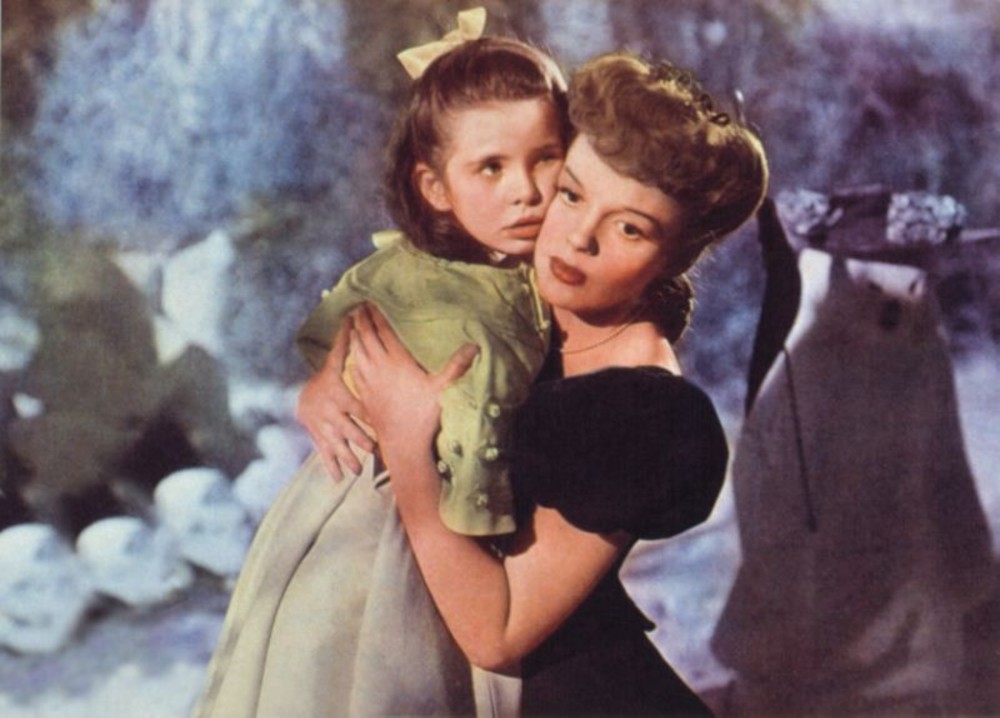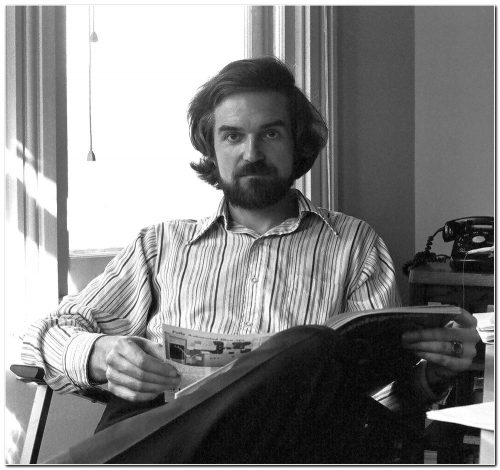Some people enjoy the thrill of a roller coaster teetering towards the inevitable drop. The sensation creeps in your gut and tingles in your skin, simply waiting for the adrenaline fueled feeling you know to expect. Horror films have a similar sensation. The thrill is lying not only in the anticipation but in the exact opposite, in sudden or lingering hidden scares coming to light. The unraveling of the “monster” defines these films, from the instrumental duh dum of the approaching shark from Jaws, to the silhouette on the shower curtains in Psycho. Film critic Robin Wood has subverted these expectations by arguing that Judy Garland’s Meet Me in St. Louis (1944) is just as good of an example for horror as Night of the Living Dead (1968). Robin Wood refers to the underlying connection between these two films as a “return of the repressed.”
Walking out onto the stage at the Toronto International Film Festival–then known as the Festival of Festivals–Robin Wood wore a white shirt with the phrase “RETURN OF THE REPRESSED” clearly printed on the front. At this festival he sold his small book The American Nightmare: Essays on the Horror Film, consisting of twelve essays he had written on the topic (these essays are now collected in the 2018 collection Robin Wood: On Horror Film). The phrase, he explained, was inspired by Freud. Wood argues that the repressed represented the surplus that existed in society but had not been allowed to exist openly, left lingering under one’s bed or hidden in the closet. Wood, who had been living with his partner Richard Lippe, understood well himself what sort of “demons” didn’t fit into the straight, monogamous normative family of the 20th century. The repressed, he argued, would inevitably return to represent itself and it showed in horror films and even classic cinema such as MGM musicals.
Wood himself was a prominent English film critic who spent most of his life teaching and writing in Canada. He first became known when an article he wrote on Hitchcock was published in the famous French film magazine Cahiers du Cinéma in 1960. From there he continued to release articles, with a particular fascination for the horror genre. He often used Marxist and Freudian theory which critics of the time found useful in their own interpretations of the horror genre. However, when questioned in an interview about his thoughts on academic film theories, he replied that a viewers’ personal relationship with a film was paramount. What he cared about was the unique subjective bond each person could have with film. What he cared about the most he answered, was “To ask ourselves, where does this film take me? From the beginning to the end…. It’s the intimate journey between the individual and the film that interests me.” After coming out as a gay man in the 1970s, he emphasized his ethical and political views and the need for a social revolution. His politicized and witty gay sensibility informed his own individual cinematic journeys. After a fruitful career, Wood died in 2009 at the age of 78 from leukemia.
Wood distinguished the horror genre by saying that it was both one of the most popular but also one of the most heavily criticized. He suggested that those who go to see horror often say they do so lightly, not giving these movies as much weight or value as perhaps their dramatic or comedic peers. Robin Wood saw the blatant fault in this and used the statement written on his shirt to argue in the essay Return of the Repressed exactly why he thought so. The horror film would often include the monster, something hidden or told only in stories or nightmares. A creature or figure that lurks beneath, threatening the status quo and the normative societal structure; and what better structure to tear apart then the family unit.
Horror delighted in using the nuclear family (husband, wife, children and often dog) as a satirical force that is picked apart and attacked. The Omen (1976) shows a normal family trying to raise the spawn of Satan, while Psycho (1960) has Norman projecting the image of his dead mother. The normal family unit is broken and horrific, displaying the powerful dominance of the “other.” The depiction of what could be a new normal for the family is hidden and rejected but still demands to be seen. This is something one wouldn’t imagine portrayed in your typical MGM musical such as Meet Me in St. Louis, and yet Robin Wood looked closer and saw that the repressed nature that threatens the normative family existed in that movie as well.
Meet Me in St. Louis, is a musical about a group of sisters navigating their lives and loves in St. Louis, Missouri, with Judy Garland playing the second oldest sister who’s hopelessly in love with the neighbor boy who hasn’t noticed her. A typical classic romantic musical one might think, but Wood investigated beyond Judy Garland’s centralized glamour and noticed the youngest sister Tootie (Margaret O’Brien). A scene in particular that he points out has the young girl decapitating snowmen modeled after her family members, comparing it to a scene from a horror. Not taking his comparison too lightly, I watched the film myself to see just how a Judy Garland musical could possibly be compared to the return of repressed horror and boy was I not disappointed.
Tootie’s violent thoughts and tendencies are played for laughs as the wacky young girl, but she could for all measures be one murder away from Damien in The Omen and it would not have been out of character for her. Her first line in the film has her worried about her cat and her mother in jest saying she killed it, kicking it down the stairs, breaking it’s spine on every step. Completely unfazed by this, Tootie continues to look for her cat. Throughout the movie she often comments on the people she would like to kill (again played as a joke), lies to her family and has an alarmingly large amount of dolls buried in the cemetery because they “died.” Tootie’s character serves, just like Damien, to unstabilize the normative family unit. Wood sees her instead as a progressive figure, reaching for new norms that must exist, destroying the expectations that are placed on her. While Judy Garland (a classic gay icon I might add) clearly demonstrates repressed (although straight) sexuality.
If you’re addicted to finely tuned criticism, Robin Wood’s fascinating takes on horror is a pleasure that puts a rigorously intelligent gay spin on some old cinematic gems.
Read More:
10 Queer Horror Gems You Might Have Missed
Robin Wood on the Horror Film: Collected Essays and Reviews
Featured image: Meet Me in St Louis
Author Photo: Robin Wood via Cineaste





